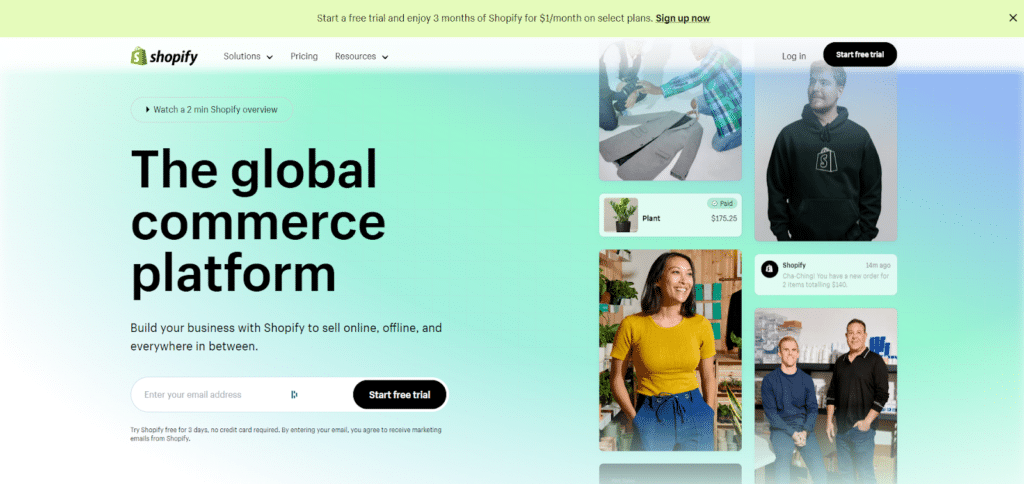Crowdfunding can be a great way to bring a consumer product to market for CPG brands. Platforms like Kickstarter and Indiegogo allow entrepreneurs and innovators to raise funds from individuals who are interested in their product and this not only provides a way to finance the production of the product, but it also serves as a form of market validation.
But what comes after crowdfunding? The next step after running a successful crowdfunding campaign for many CPG brands is building an eCommerce store. However, launching and scaling a successful eCommerce store can be a daunting challenge, but there are several steps you can take to make the process more manageable, including building an eCommerce strategy.
Here are some tips on how you can successfully transition from a crowdfunding campaign to a thriving eCommerce business.

Take Care of your Backers
Fulfilling the orders of your crowdfunding backers should be a top priority after a successful campaign. Not only is it important for maintaining good customer relationships, but it’s also essential for building your reputation.
It’s important to keep your backers informed throughout the fulfillment process, with regular updates on production, shipping, and any unexpected delays. Providing clear and transparent communication can go a long way in building trust with your customers.
In addition, it’s important to have a solid plan in place for managing inventory, shipping, and logistics to ensure that you can fulfill all of your orders in a timely and efficient manner. This may require hiring additional staff or working with third-party logistics providers to handle the increased volume.
Once you have fulfilled all of your crowdfunding orders, you can shift your focus to scaling your business and expanding your customer base.

Select an eCommerce Platform
There are many eCommerce platforms to choose from, each with its own strengths and weaknesses. A popular choice among many eCommerce businesses is Shopify.
One of the biggest advantages of Shopify is its user-friendly interface and intuitive design. This makes it easy for entrepreneurs to set up an online store and manage their inventory, orders, and payments.
In addition, Shopify offers a wide range of apps and plugins to help businesses with tasks like order fulfillment, sales reporting, and social media integration. Many of these apps are free to use, which can be helpful for small businesses with limited budgets.
Another key advantage of Shopify is its scalability. As businesses grow and expand, Shopify can easily accommodate their changing needs, from adding new products to expanding into new markets.
Other platforms you can check out are Bigcommerce, Magento, Squarespace and Wix.
It’s important to carefully evaluate all available options to determine which platform is the best fit for your specific business needs and goals.
Understand your target market
It’s important to understand who your target market is and what they are looking for in a product. This will help you create messaging that resonates with them and design a website that meets their needs.
How to understand your target market
- Define your ideal customer: Start by creating a detailed profile of your ideal customer. This includes demographic information such as age, gender, income, education, location, and lifestyle.
- Conduct market research: Gather data about your target market. This can include online surveys, focus groups, and analyzing customer behavior on your website and social media channels.
- Analyze your competitors: See who their target market is and how they are reaching them. This can help you identify gaps in the market and opportunities to differentiate yourself.
- Use analytics tools: Use analytics tools like Google Analytics to understand how visitors are interacting with your website. This can help you identify which pages are most popular, where visitors are coming from, and what keywords they are using to find your website.
- Engage with your customers: Engage with your customers through social media, email marketing, and customer service interactions. This can help you better understand their needs, preferences, and pain points.
Optimize your website for conversions
Optimizing your eCommerce website for conversions is crucial for driving sales and growing your eCommerce business.
Make sure to:
- Optimize your website design: A visually appealing and user-friendly website design can improve user engagement. Use high-quality images, clear and concise product descriptions, and easy-to-navigate menus to make it easy for customers to navigate to what they’re looking for.
- Streamline the checkout process: The checkout process should be as simple and intuitive as possible.
- Provide social proof: Including customer reviews and ratings on your product pages can help build trust with potential customers and increase conversions. Showcase customer testimonials, social media mentions, and press mentions to further build credibility.
- Offer discounts and promotions: Offering discounts and promotions can help incentivize customers to make a purchase.
- Optimize for mobile: More and more consumers are shopping on mobile devices, so it’s crucial to ensure that your website is optimized for mobile.
- Monitor and analyze your website’s performance: Regularly monitoring your website’s analytics can help you identify areas for improvement and make data-driven decisions to optimize your website for conversions. Use tools like Google Analytics to track key metrics such as conversion rate, bounce rate, and average order value.

Leverage email marketing
Email marketing is a powerful tool for eCommerce stores to engage with their customers, build relationships, and drive sales.
How to use email marketing to your advantage:
- Build an email list: The first step to successful email marketing is building a list of subscribers. You can collect email addresses through sign-up forms on your website or through your social media channels.
- Create engaging content: Your emails should provide value to your subscribers and encourage them to take action. Consider sending product recommendations, exclusive promotions, or helpful tips that have to do with your product.
- Attention-grabbing subject lines: Your subject line is the first thing that subscribers will see, so it’s important to make it compelling.
- Optimize for mobile: More and more consumers are checking their emails on mobile devices, so it’s crucial to ensure that your emails are optimized for mobile. Use a responsive design and keep your content concise and easy to read.
- Automate your campaigns: Consider setting up automated welcome emails, abandoned cart reminders, or post-purchase follow-ups.
Focus on customer service
Focusing on customer service is crucial for the success of any eCommerce store. Make sure you have a system in place to quickly respond to customer inquiries and resolve issues.
Why focus on customer service in your eCommerce store?
- Builds customer loyalty: Providing excellent customer service can help build trust and loyalty with your customers.
- Improves customer retention: A strong focus on customer service can help improve customer retention rates. When customers have a positive experience with your store, they are more likely to return and make repeat purchases.
- Reduces negative feedback: If customers have a negative experience with your store, they are more likely to leave negative feedback, which can harm your online reputation. By providing excellent customer service, you can reduce the likelihood of negative feedback and maintain a positive online reputation.
- Increases sales: Providing great customer service can lead to increased sales through positive word-of-mouth, repeat business, and customer referrals.
- Differentiates your store from competitors: In a crowded eCommerce marketplace, providing excellent customer service can help differentiate your store from competitors and create a competitive advantage.

Get funding for your Inventory
Inventory management is crucial for the success of any eCommerce store. It can help improve customer satisfaction, reduce costs, and improve forecasting, all of which can contribute to the long-term success of your business.
And finding funding for your inventory is an important aspect of running a successful eCommerce store. For physical product companies (CPG companies), or those producing shelf-stable consumables, a growth funding option that provides larger amounts than traditional financing and at faster speeds is inventory funding with Kickfurther.
Kickfurther funds up to 100% of your inventory costs on flexible payment terms that you control. Kickfurther’s unique funding platform can fund your entire order(s) each time you need more inventory, so you can put your capital on hand to work growing your business without adding debt or giving up equity.
Why Kickfurther?
No immediate repayments: You don’t pay back until your product sells and you control your repayment schedule.
Non-dilutive: Kickfurther doesn’t take your equity.
Not a debt: Kickfurther is not a loan, so it does not put debt on your books, which can sometimes further constrain your access to additional capital providers and diminish your valuation if you approach venture capital firms.
Quick access: You need capital when your supplier payments are due. Kickfurther can fund your entire order(s) each time you need more inventory.
Interested in inventory funding through Kickfurther? See how much capital you can access by creating an account today at Kickfurther.com!

Brandi Whytas is the Partnerships Marketing Manager at Kickfurther. She enjoys connecting with consumer product brands to understand their needs, while also building a network of partner services that supports brands in their continued growth.





